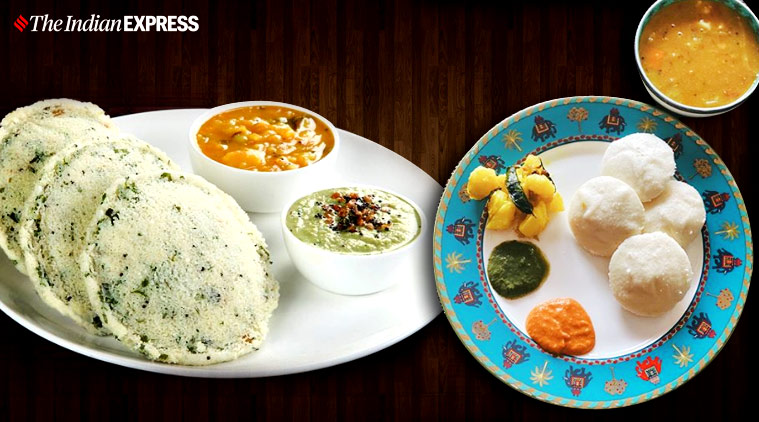 The proportion of rice: dal is 2:1 for idli batter. (Source: Ranveer Brar/Karisma Kapoor/Instagram;designed by Gargi Singh)
The proportion of rice: dal is 2:1 for idli batter. (Source: Ranveer Brar/Karisma Kapoor/Instagram;designed by Gargi Singh)
Considered to be among the most popular and healthiest breakfasts, idlis, the soft and fluffy, steamed, savoury cakes are preferred for their low calories and easy preparation. Long considered a South Indian staple, food historians have divided opinions on its origin, with one view proposing that the idli we know today came from Indonesian influence. Whatever it may be, even in non-south Indian households, idlis remain a favourite.
However, there are certain rules to making idlis. Here is a ready reckoner.
* The two most important ingredients of idlis are rice and lentils (or dal). Idli batter is a simple mixture of soaked and ground rice and lentils that is then steamed in a steamer.
* For fluffy idlis, use idli rice or parboiled rice, which is also known as ukda chawal. Avoid using long-grain rice.
* The proportion of rice to dal is 2:1. This means for every two cups of rice, one cup of dal is to be used.
* Traditionally, split black gram dal or urad dal was used; but this was labour-intensive as the skin had to be removed. So these days, white whole urad dal without the husk or skin is used. Out of the two varieties of the dal available in the market — polished and unpolished — the unpolished one is used.
* The secret ingredient is soaked fenugreek seeds or methi dana that helps get the fluffiness right. It’s healthy and also aids in fermentation. But if you use too much of it, the idli would be bitter. And if you want a really white idli, skip the seeds.
* Instead of using table salt that may contain other impurities, use rock salt which is often minimally processed.
* For fluffier idlis, people also add poha or sabudana, which aids in faster fermentation.
* If you want your idlis to rise and not be flat, pay attention to the quantity of water when grinding the mixture. The batter thins out a little post-fermentation.
* If you don’t have a wet grinder, which is considered the best for grinding the idli batter as the ingredients don’t get heated up and urad dal fluffs up, you can use a mixie. However, to prevent it from heating up, use ice water to grind the ingredients.
* Make sure you grease the idli plates in the steamer with oil before ladling the batter. This ensures that the steamed idlis come out clean.
* Use a sharp spoon to spoon out the idlis from the mould once they cool down after the steamer is removed from heat.
Pro tip: If you are in the mood for some dosas, wait for a couple of days so that the batter sours a little and add some water to dilute the batter without making it runny.